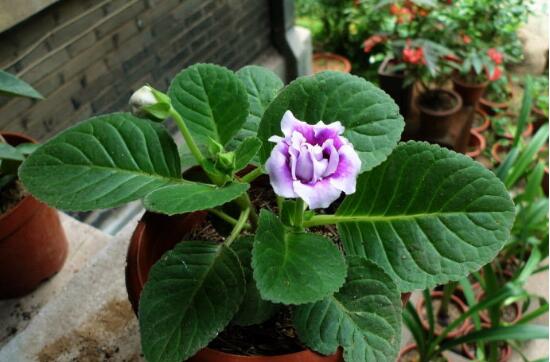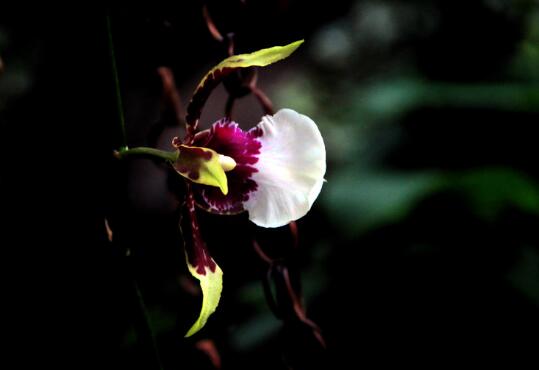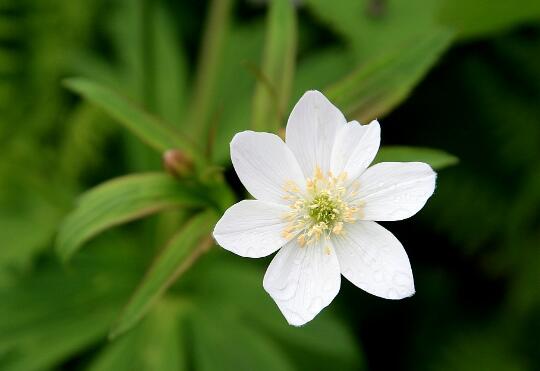How to propagate paulownia flower? the propagation method / bulb cutting of paulownia flower is the most practical.
The efficacy of the big paulownia flower is very good. It not only blossoms beautifully, but also absorbs dust and makes the indoor air more fresh. Such plants are naturally raised at home by many people, but if they are bought and raised, it is better to plant them themselves, and this requires us to master the breeding methods of paulownia flowers. So how do big paulownia flowers reproduce? The following will be introduced in detail by the editor.
First, how to reproduce the big paulownia flower

Generally speaking, there are three methods of propagation of paulownia flowers: dividing balls, sowing and cutting. Among them, the bulb is buried in the soil, and then planted in a new flowerpot; sowing is to sow the seeds in the soil; and cutting is to branch and bud, that is, to insert the branches or buds of the tree into the soil. Let's move on to the specific method of operation.
2. Three propagation methods of paulownia flower (1) how to divide the ball
1. Tuber selection: the bulb propagation of Tripterygium paniculata, it is best to choose the plant of 3-4 years. In winter, paulownia enters a dormant period, when its tubers are dug up and stored in a cool, dry environment.
2. Pot soil selection: according to the habits of paulownia, the tuber culture soil is generally used: 1 perlite, 1 river sand, 3 rotten leaf soil and a small amount of rotten and sun-dried fine broken poultry manure. The bottom of the flowerpot had better be covered with coarse sand or cinder, which is conducive to drainage and ventilation and prevent tubers from rotting.
3. Start to divide the ball: water the tuber appropriately. In spring, when the temperature warms up, it will sprout. When the bud grows to about 5 cm, take out the tuber and cut it into multiple pieces with a knife, each with a bud. Then smear the cut with plant ash and plant it in the basin soil, pour it once after planting, and then water less to keep the basin soil moist.
(2) sowing and propagation of paulownia.
Paulownia can leave seeds after flowering, so the breeding method can be selected by sowing method, and the time can be carried out in spring and autumn. The methods are as follows:
Soak the seeds of paulownia for a day, then prepare to sow the soil, put it in the flowerpot, and then sow the seeds on it. After sowing, wet the flowerpot with water, cover it with glass, put it in an environment of 18-20 ℃, germinate in about 10 days, and blossom after 6 months.
(3) cutting methods of Tripterygium paniculata.
In addition to dividing balls and sowing seeds, cutting is the most common propagation method of paulownia. On the other hand, the cuttage propagation, branch cutting and bud cutting of paulownia are as follows:
1, branch insertion method: take the newly germinated twigs on the big paulownia corm, 2-3 cm, and insert them into the fine sand or soil. After the cuttage is finished, put it in the semi-shade and keep the temperature at 18-20 ℃. It will root in about 15 days.
2. Leaf insertion method: take off the strong leaves of the tree tree, together with its petioles, cut off the leaf's 1 stem 2, and then tilt it into the matrix. Keep the soil moist after cutting, then cover it with glass, put it in the semi-shade, keep room temperature 25 ℃ and high humidity, and root will grow well about 20 days after cutting.
Generally speaking, the breeding method of paulownia flower is very simple, and its breeding method is not difficult, whether it is ball division, sowing or cutting, it can survive. However, the method is dead, people are alive, we can according to the actual situation, choose the method to reproduce. With regard to the breeding method of Yulu, the editor has introduced this, hoping to bring help to everyone.
How does paulownia reproduce? Propagation methods of paulownia paniculata
[FAQ] how to reproduce paulownia?
[senior flower friend's answer] Dayantong flowers are gorgeous, and the plants are small, so they are very suitable for indoor planting and are deeply loved by flower lovers. Such a beautiful potted plant, I believe many small friends can not wait to do their own reproduction of several plants, so how to breed the big rock tree? The breeding methods of paulownia are introduced as follows.
Picture: paulownia grandiflora
First, sowing and reproduction
Soak the seeds for 24 hours before sowing to promote early germination, load the culture soil with rotten leaf soil, vegetable garden soil and fine sand in a shallow basin or wooden box, spread the seeds evenly after the soil is leveled, cover with glass after moistening the bottom of the basin, and emerge after about 10 days under the humidity of 1820 ℃.
Second, separate ball reproduction
The 2-to 3-year-old corms after dormancy were first buried in the soil and watered thoroughly in autumn and kept at room temperature for 22 ℃. When the buds grew to about 0.5cm, the bulbs were dug up and cut into 2 to 4 pieces, each with a bud, and each piece was planted in a pot, that is, to form a new plant.
Third, branch cuttage propagation
The method of branch propagation is commonly used in the propagation of paulownia. Twigs often sprout on the tubers of Caulownia paniculata. The cuttings are 2-3 cm long and inserted into fine sand or expanded perlite matrix. Shade should be paid attention to to avoid the trend of sunlight. The roots can take root at room temperature of 18-20 ℃ for 15 days.
Picture: cuttage propagation of paulownia
IV. Leaf cuttage propagation
The leaves with strong growth and middle development were selected, together with the petiole, half of the leaves were cut off, and the petiole was obliquely inserted into the wet sand substrate, covered with glass and shaded, keeping room temperature 25 ℃ and high air humidity. 20 days after insertion, the base of the petiole produced healing tissue.
5. Bud insertion propagation
The bud insertion and propagation of paulownia is generally carried out when the new buds germinate up to 4 cm to 6 cm in spring. the extra new buds are broken off from the base, then inserted into the sand bed, and maintain a certain humidity, after a period of cultivation, bloom from June to July of the following year.
Picture: paulownia grandiflora
[editor's conclusion] the most fulfilling thing in raising flowers and plants is to watch their own potted plants grow little by little. The breeding methods of paulownia are introduced in the above. Let's quickly start to breed a few pots.
The breeding method of paulownia; there are five ways to teach you.
The big paulownia flowers are colorful and the flowering period is long. Small potted plants are ideal potted flowers for decorating and decorating the interior and windowsill, and the reproduction and maintenance of paulownia is relatively simple. Today, the editor will tell you about the breeding methods of paulownia:
Breeding methods of paulownia paniculata:
1. Sowing and propagation of paulownia.
Paulownia can be sowed and propagated, generally in both spring and autumn. Before sowing, soak the seeds for 24 hours to promote their early germination. Use shallow pots or wooden boxes to load rotten leaf soil, vegetable garden soil and fine sand mixed culture soil. After leveling the soil, spread the seeds evenly, moisturize the bottom of the basin, and cover it with glass. Under the humidity of 18-20 ℃, the seedlings emerged after about 10 days. After emergence, let it gradually see the sun. When the seedlings grow 3-4 true leaves, they are planted in small pots.
2. Split-ball propagation of paulownia.
Paulownia can be propagated by dividing balls. The 2-to 3-year-old corms that have been dormant are selected and buried in the soil in autumn or from December to March of the following year. Water is poured into the soil and kept at room temperature for 22 ℃ for germination. When the bud grows to about 0.5 cm, dig up the ball and cut the bulb into 2 to 4 pieces with a sharp knife, each with a bud, and the cut is coated with plant ash to prevent decay. Each piece is planted in a pot to form a new plant.
3. Branch cutting propagation of paulownia.
The method of branch propagation is also a common propagation method of paulownia. Twigs often sprout on the tubers, cut 2-3 cm long when cutting, insert them into fine sand or expanded perlite matrix, pay attention to shading, avoid the trend of sunlight, maintain room temperature for 18-20 ℃, and rooting in 15 days.
4. Caulownia leaf cutting propagation
The leaf insertion propagation of paulownia is to select the leaves with strong growth and middle development, together with the petiole from the base, cut off half of the leaves, insert the petiole obliquely into the wet sand substrate, cover it with glass and shade, keep room temperature 25 ℃ and high air humidity, produce healing tissue at the base of petiole 20 days after insertion, and move into a small basin after growing seedlings. In that year, only small bulbs were formed, and new buds were sent out from the bulbs after dormancy. After a period of cultivation, they blossomed from June to July of the following year.
5. Budding and propagation of Caulownia paniculata
Bud insertion is also a common propagation method of paulownia. It is generally carried out in spring when the new buds germinate up to 4 cm to 6 cm long. The extra buds are broken off from the base, inserted in the sand bed, and maintain a certain humidity. After a period of cultivation, it will blossom from June to July of the following year.
The growth ability of paulownia is exuberant, there are many breeding methods available, and it is relatively easy to feed. It is believed that it will have a good effect to breed several pots of paulownia flowers to decorate and beautify the home.
- Prev

How to plant Dendrobium orchid? planting method of potted Dendrobium orchid / temperature control
Among the propagation methods of Dendrobium, it is mainly divided into three methods: sowing propagation, cutting propagation and split propagation, in which sowing reproduction is a more commonly used one, and the survival rate is also very high, but if you want to plant successfully, there are also a lot of things to pay attention to. About how to plant Dendrobium
- Next

How to grow anemone, the planting method / survival rate of anemone is as high as 90%
Among the breeding methods of anemone, sowing and reproduction are the main methods. After countless practices, the survival rate of this method is still very high. However, if you want to plant successfully, there are still many things that need to be paid attention to. How to grow anemone? What is the planting method of anemone?
Related
- Fuxing push coffee new agricultural production and marketing class: lack of small-scale processing plants
- Jujube rice field leisure farm deep ploughing Yilan for five years to create a space for organic food and play
- Nongyu Farm-A trial of organic papaya for brave women with advanced technology
- Four points for attention in the prevention and control of diseases and insect pests of edible fungi
- How to add nutrient solution to Edible Fungi
- Is there any good way to control edible fungus mites?
- Open Inoculation Technology of Edible Fungi
- Is there any clever way to use fertilizer for edible fungus in winter?
- What agents are used to kill the pathogens of edible fungi in the mushroom shed?
- Rapid drying of Edible Fungi

